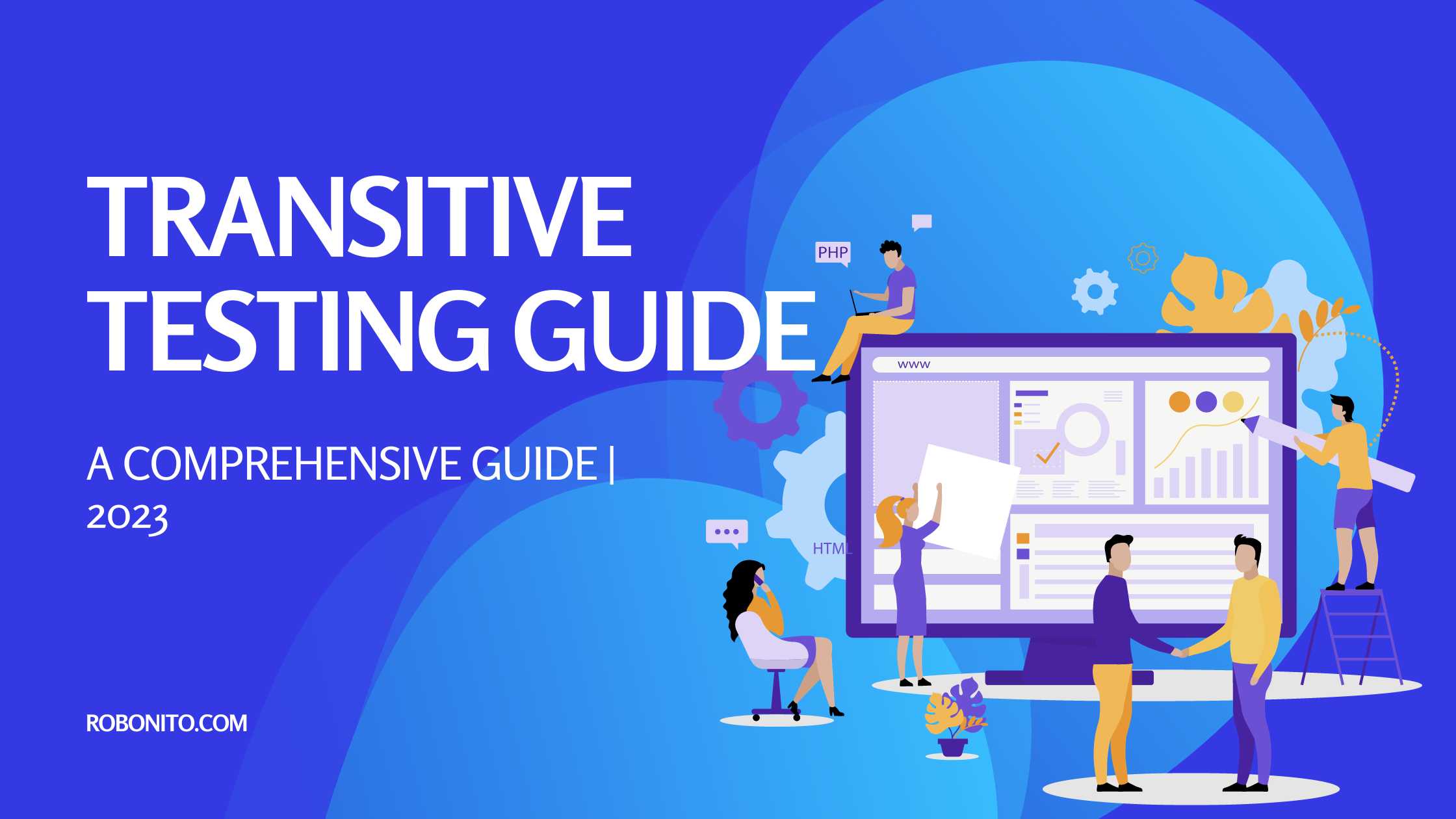Transitive testing plays a pivotal role in the software development lifecycle, ensuring the quality, functionality, and compatibility of software applications across diverse environments. This comprehensive article aims to explore the depths of transitive testing, including its definition, significance, various types, benefits, challenges, effective strategies, future trends, and frequently asked questions in the realm of software development.

A. Defining Transitive Testing
Transitive testing, a critical part of software testing methodologies, involves assessing the behavior and performance of software applications across different environments, systems, or configurations. It focuses on validating the software's functionality under varying conditions to ensure consistent performance and reliability.
B. Importance in Software Development
In the ever-evolving landscape of software development, transitive testing holds immense importance. It ensures that the software operates seamlessly across diverse operating systems, browsers, hardware configurations, and other environments, guaranteeing a consistent and reliable user experience.
II. Types of Transitive Testing

A. Functionality Testing
Functionality testing within transitive testing evaluates whether the software performs its intended functions uniformly across diverse environments without encountering glitches or errors. It ensures that the software's features work as expected across different setups.
B. Performance Testing
Performance testing is crucial in transitive testing as it focuses on assessing the software's speed, responsiveness, and stability under various conditions. It ensures optimal performance across different configurations, preventing issues related to lag, crashes, or slowdowns.
C. Compatibility Testing
Compatibility testing is another vital aspect, involving the verification of the software's compatibility with different devices, browsers, operating systems, and configurations. It aims to ensure a seamless user experience irrespective of the platform used, minimizing compatibility-related issues.
III. Benefits of Transitive Testing

A. Ensuring Software Reliability
Transitive testing ensures the reliability of software by identifying and rectifying potential issues that may arise due to differences in environments. It mitigates the risk of software failures or malfunctions by validating its behavior across various setups.
B. Enhancing User Experience
By validating consistent performance across diverse environments, transitive testing contributes significantly to a seamless user experience. It ensures that users have a consistent and reliable experience, fostering satisfaction and loyalty.
C. Identifying Compatibility Issues
This testing method aids in the early detection of compatibility issues, allowing developers to address them proactively. By identifying and resolving compatibility issues early in the development cycle, it reduces the risk of user dissatisfaction and post-release glitches.
IV. Strategies for Effective Transitive Testing
A. Automated Testing Tools
The utilization of automated testing tools significantly streamlines transitive testing processes. It enables rapid and comprehensive evaluation across multiple environments, reducing manual effort and increasing testing efficiency.
B. Comprehensive Test Plans
Developing detailed and comprehensive test plans tailored to different environments is essential. These plans ensure thorough coverage and validation of software functionality under various conditions, reducing the chances of overlooking critical scenarios.
C. Continuous Integration
Implementing continuous integration practices in software development facilitates frequent and automated testing. This ensures ongoing software quality across diverse setups, enabling developers to identify and address issues promptly.
V. Challenges in Transitive Testing

A. Complexity of Software Systems
The complexity of modern software systems poses a challenge in ensuring consistent performance and functionality across diverse environments. With intricate architectures and dependencies, maintaining uniform behavior becomes challenging.
B. Resource Intensiveness
Conducting transitive testing requires substantial resources, including time, manpower, various testing environments, and tools. It can be resource-intensive, especially in large-scale projects, impacting project timelines and budgets.
C. Managing Diverse Environments
Managing and maintaining diverse environments for testing purposes can be complex and time-consuming. Ensuring an accurate representation of real-world conditions across different configurations adds complexity to the testing process.
VI. Future Trends in Transitive Testing
A. AI and Machine Learning Integration
The integration of AI and machine learning in transitive testing is anticipated to revolutionize the process. It holds the potential to enhance accuracy and efficiency in detecting potential issues across various environments by analyzing vast amounts of data.
B. Shift Left Testing Approach
The adoption of a "Shift Left" approach, where testing is initiated early in the development cycle, is expected to minimize transitive testing challenges. Addressing issues at an earlier stage reduces the complexities associated with diverse environments and configurations.
C. IoT and Transitive Testing Challenges
As the Internet of Things (IoT) continues to expand, the challenges in conducting transitive testing for IoT devices and systems will grow. Innovative testing methodologies will be required to address the complexities arising from interconnected devices and environments.
VII. Conclusion
In conclusion, transitive testing remains a cornerstone in ensuring software quality across diverse environments. Its role in guaranteeing software reliability, enhancing user experience, and identifying compatibility issues is paramount. As software development continues to evolve, the future of transitive testing holds promising advancements and challenges that necessitate adaptation and innovation.
Book a free demo now! and know how @Robonito can reduce your testing time by 98% and reduce your costs.
FAQs
-
Why is transitive testing crucial in software development? Transitive testing ensures that software performs consistently across diverse environments, ensuring user satisfaction and reliability.
-
What are the primary challenges in conducting transitive testing? Challenges include managing diverse environments, resource intensiveness, and addressing the complexity of modern software systems.
-
How can AI impact the future of transitive testing? AI integration is expected to enhance accuracy and efficiency in detecting and addressing compatibility issues across various environments.
-
What is the significance of continuous integration in transitive testing? Continuous integration allows for frequent and automated testing, ensuring ongoing software quality across diverse setups.
-
How does transitive testing contribute to user satisfaction? By identifying and addressing compatibility issues early on, transitive testing ensures a seamless user experience, fostering satisfaction and trust.
